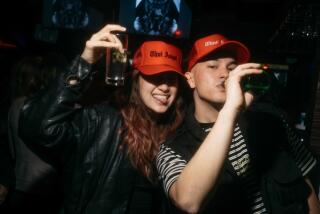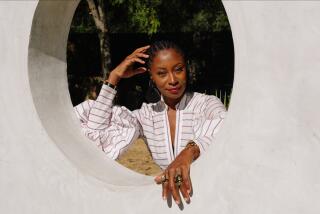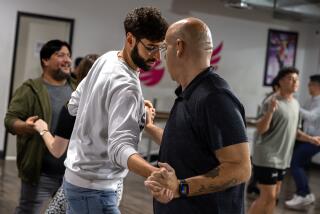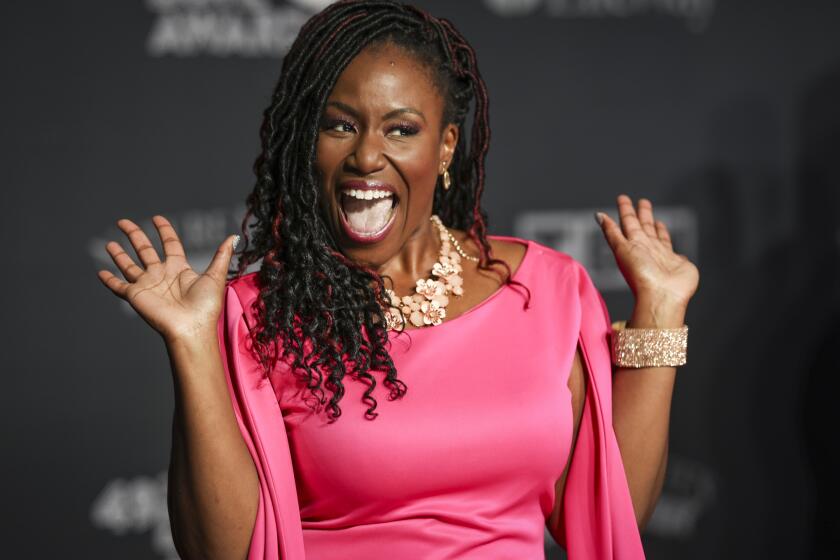Dancing to the smooth groove of urban ballroom
It’s Friday night, the lights are low, and music by Beyoncé is pumping, but this is no ordinary nightclub. Dancing couples glide by doing sophisticated ballroom dance steps. And there’s no one checking ID at the door: The average age here is 50.
Welcome to Urban Ballroom Fridays, a gathering held at the Los Angeles Steppers Connection (LASC) dance studio in Inglewood every second and fourth Friday of the month for devotees of urban ballroom, a partner dance that combines the refinement of ballroom dance steps with the soulful music of old-school Motown such as the Temptations and contemporary R&B like Queen Latifah, Ne-Yo, Babyface, even George Michael.
The evening starts with a dance class taught by Victor Brown and Ujazi Calomeé, but afterward even more people show up, the lights are dimmed, tables and refreshments are laid out, and the floor opens up for a party. By about 10 p.m., the dance floor is filled with a mostly African American crowd in the 40s through 60s age range, dressed to impress. Ladies sport skirts and strappy heels; many of the men are decked out in vests and fedoras.
It’s an atmosphere that’s welcoming to baby boomers like Friday night regular Sedalia Steed: people who love to dance to R&B but don’t feel comfortable in youth-oriented nightclubs.
“I never ever thought at this age, at this time in my life, that I would find something that I look forward to so much,” says Steed, 56, a resident of Altadena who became instantly hooked when she discovered the dance in 2008.
Urban ballroom is a “mature, adult dance that’s done to nice mellow music,” Brown says, “so you can dress up nicely and don’t have to worry about coming home drenched. It doesn’t wear your joints out. The dance just speaks to the generation.”
Urban ballroom — also known as Detroit ballroom or urban contemporary ballroom — was developed by Capers Tyus, Tyrone Bradley and Linda Harris, friends from the east side of Detroit who in the 1970s fused the bop dancing that was popular in clubs with the partnered structure of ballroom. According to Michael Tyus, Capers’ younger brother: “They took the old ballroom of Fred Astaire and Ginger Rogers from the ‘20s, ‘30s, and ‘40s” and added elements of “Lindy Hop, bopping, stepping and salsa.”
After spreading the dance in Detroit and on the ballroom circuit, Capers Tyus brought the dance to Los Angeles when he and Michael moved here in 1984. He opened the studio Dance in Motion in the Leimert Park area in 1996, helping to popularize urban ballroom in local clubs. When Capers died in 2001 and the studio closed, Michael Tyus followed his brother’s wishes to keep the dance alive and started new classes of his own.
Although the dance has faded from local nightclubs, it continues to have a devoted following in dance studios. There’s a different class almost every night of the week, and many classes are followed by an after-set of social dancing such as the one at LASC.
There are certain constants to every urban ballroom gathering. Though pretty much any song with a mid-tempo cha-cha beat can be used, “Most of the music you’ll hear is classic R&B from the ‘60s, ‘70s, and early ‘80s,” says Terance Jones, the owner of LASC who programs the music on second and fourth Fridays. Requests are welcomed (patrons often bring in their own CDs to play), and groups such as Maze with Frankie Beverly, the Dells, and Harold Melvin & the Blue Notes are popular. Jones also throws in a splash of smooth, contemporary Top 40, or even old school disco such as the Gap Band.
Interspersed with the partner dances are urban line dances that pull the whole crowd onto the floor to move in unison to songs like Will Smith’s “Wild West,” a tradition that arose for a practical reason: At urban ballroom events, there are often three times as many ladies as men. During line dances, no one has to sit out for lack of a partner.
Steed, however, isn’t bothered by having to share her dance partners. “I love how the gentlemen find ways to make sure we all get a dance,” she says. “We all end up feeling like we’ve been chosen.”
Letting the ladies shine is, in fact, at the heart of urban ballroom. “With the men there’s a certain degree of arrogance of style and how they carry themselves,” Brown says. But underneath that swagger, “No matter how well you’re dressed, it’s about showcasing the lady.”
Aaron Charles Williams of West Los Angeles, who has been dancing urban ballroom for the last five years and turns 60 this month, is a good example of that. On a recent Friday, Williams was dressed in a royal blue vest, fedora and tie, yet his focus was squarely on his most important accessory: his partner. “It’s all about making your partner look good,” he says. “‘Cause when she looks good, of course you look good too.”
More to Read
The biggest entertainment stories
Get our big stories about Hollywood, film, television, music, arts, culture and more right in your inbox as soon as they publish.
You may occasionally receive promotional content from the Los Angeles Times.






